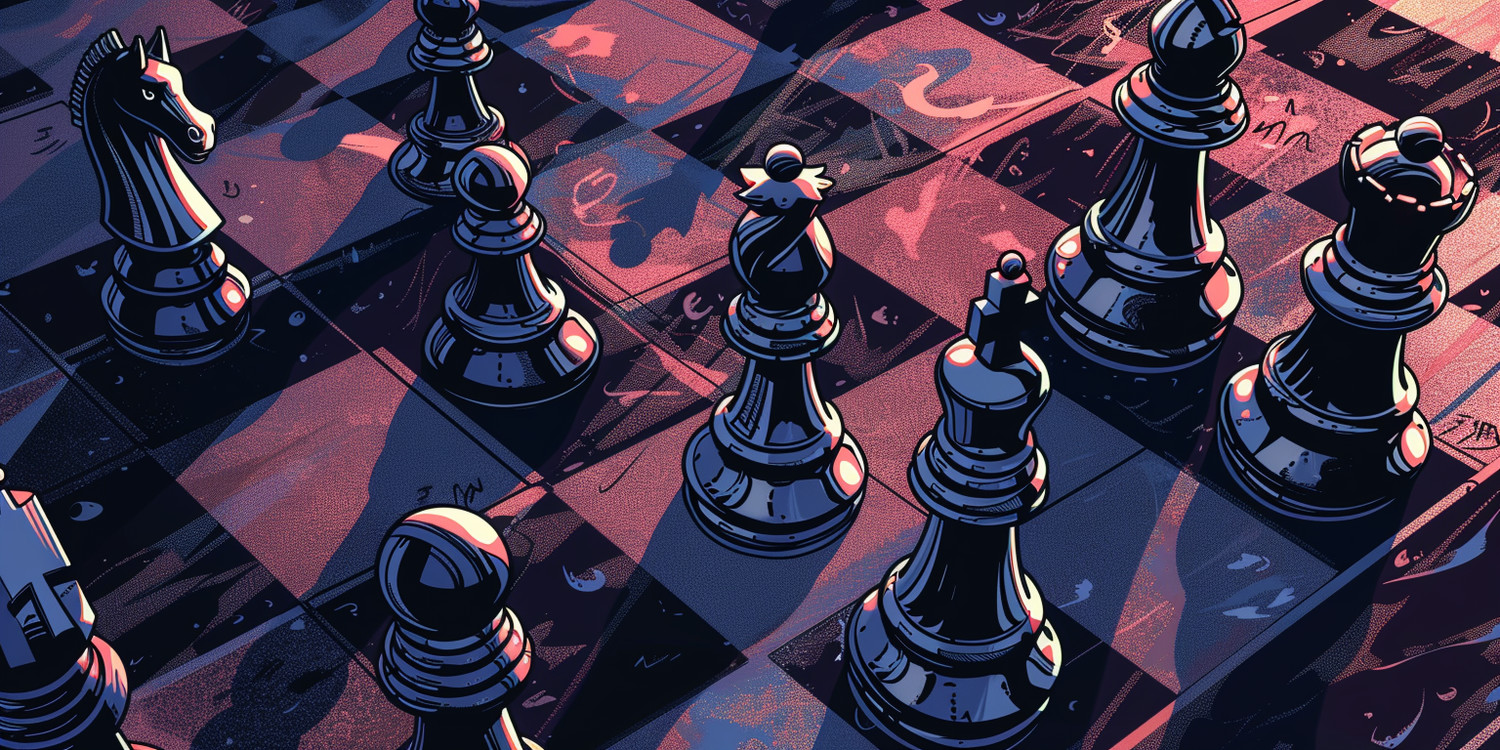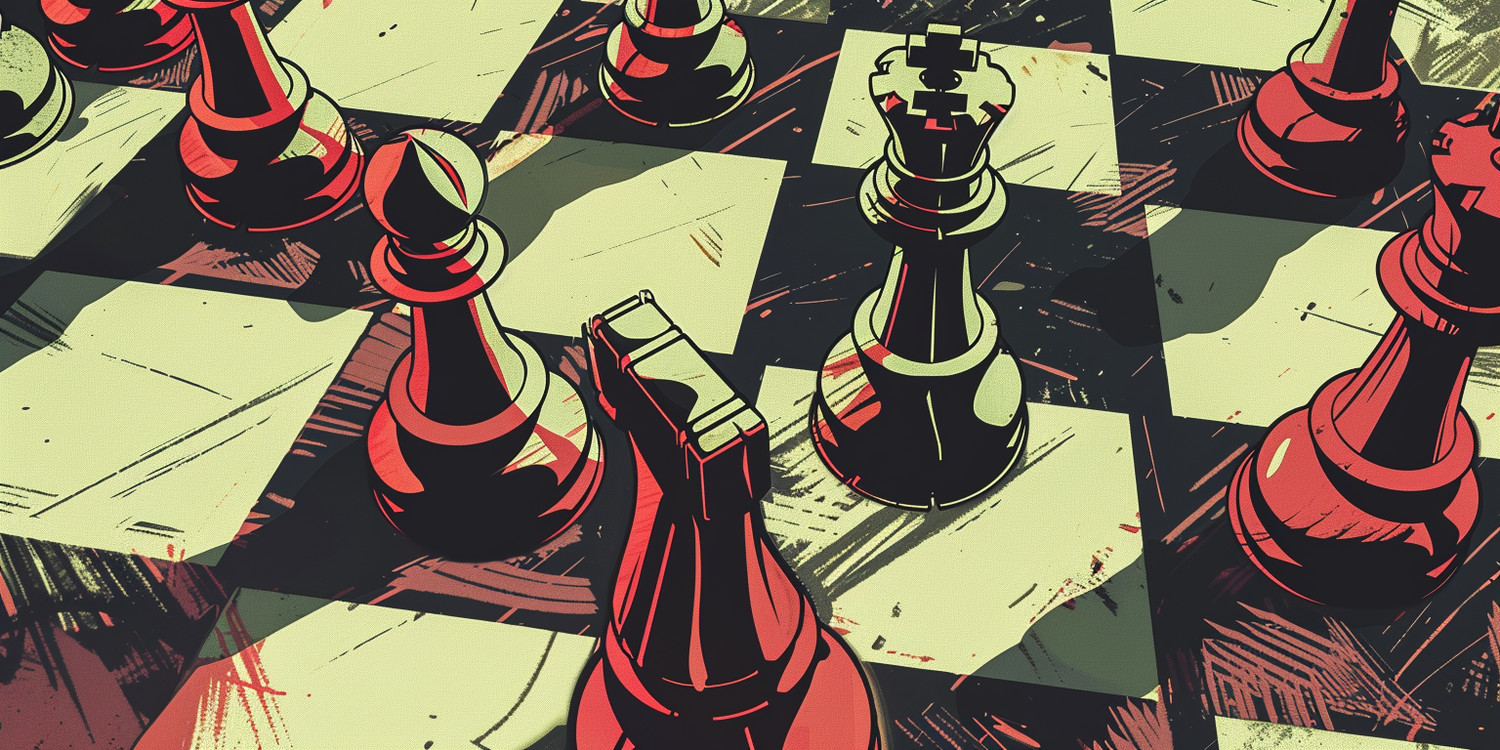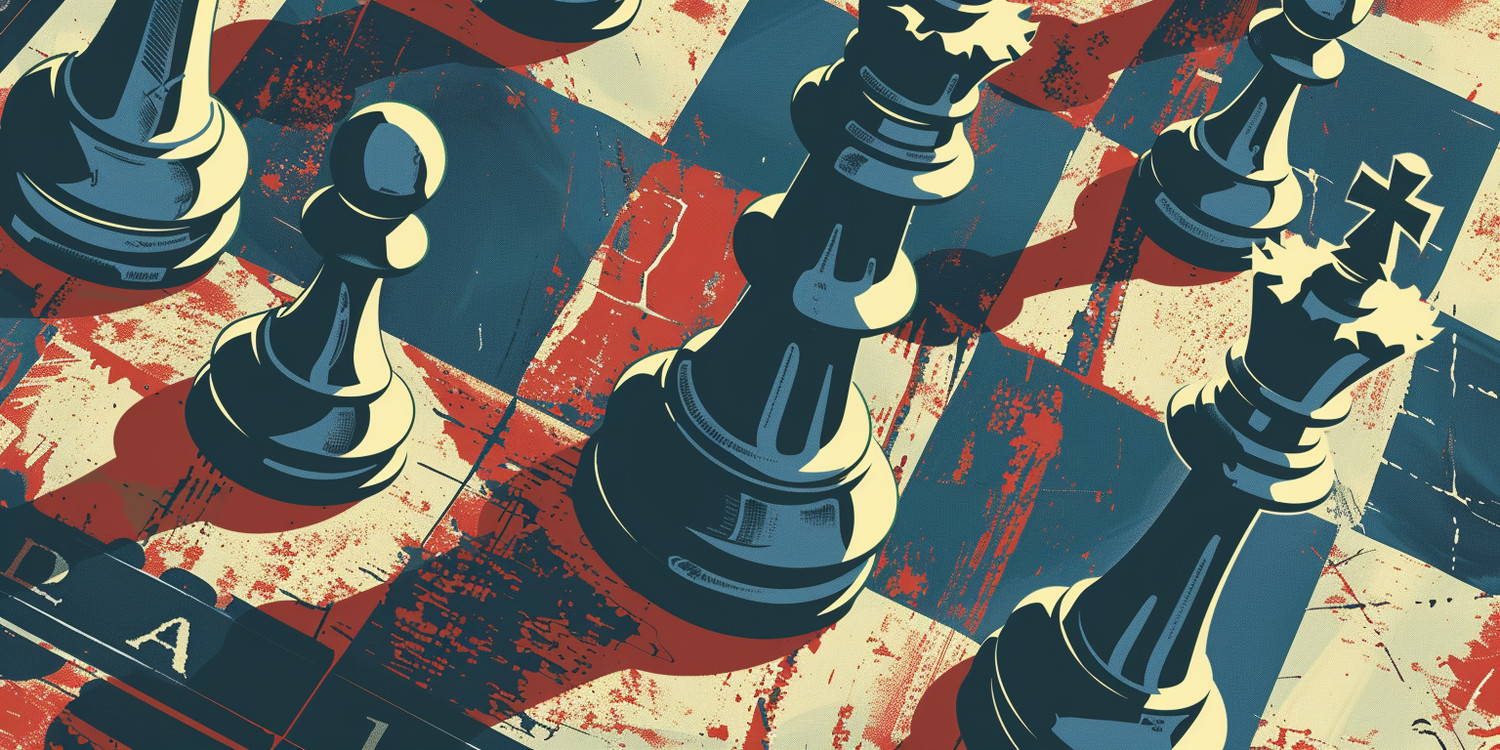The Immortal Game: Anderssen vs. Kieseritzky, 1851
This celebrated encounter, contested in 1851, exemplifies audacious attacking play. Anderssen’s sacrificial brilliance led to a stunning victory, capturing the imagination of chess enthusiasts and solidifying its place as a cornerstone of chess history and tactical ingenuity.
“Game of the Century”: D. Byrne vs. Fischer, 1956
The appellation “Game of the Century” is bestowed upon the encounter between Donald Byrne and the prodigious Robert James Fischer, contested in 1956. At the tender age of thirteen, Fischer, exhibiting an extraordinary grasp of combinational chess, orchestrated a symphony of sacrifices, culminating in a checkmating attack of remarkable elegance and precision. This contest, a watershed moment in the annals of chess history, served as the clarion call announcing Fischer’s arrival as a force to be reckoned with, foreshadowing his future dominance of the chess world. The game commenced with a relatively unassuming opening, a seemingly innocuous Giuoco Piano, but quickly transcended the mundane as Fischer, with uncanny prescience, embarked upon a series of daring gambits. A knight sacrifice on f2, followed by a queen sacrifice, unraveled Byrne’s defensive structure, exposing his king to the full brunt of Fischer’s tactical acumen. The ensuing combination, a tapestry woven with tactical threads of pins, forks, and skewers, culminated in a forced checkmate, leaving Byrne’s position in tatters.
The game’s impact resonated far beyond the immediate result; it became a symbol of youthful genius triumphing over established experience, a testament to the power of imagination and calculation in the royal game. Annotations and analyses of the game have filled volumes, dissecting each move with meticulous detail, revealing the intricate layers of tactical complexity that lay beneath the surface. The “Game of the Century” remains a cornerstone of chess instruction, a timeless masterpiece studied and admired by players of all levels, a perpetual source of inspiration for aspiring grandmasters seeking to emulate Fischer’s brilliance. This game not only propelled Fischer into the limelight but also redefined the standards of chess play, demonstrating the boundless potential of youthful talent and the enduring allure of tactical fireworks on the sixty-four squares. It stands as a monument to the beauty and complexity of chess, a reminder that even in a game governed by logic and calculation, there is always room for artistry and innovation. The legacy of Byrne vs. Fischer, 1956, continues to inspire generations of chess players, ensuring its place as a pivotal moment in the history of the game.
Morphy vs. Duke Karl / Count Isouard, 1858: A Night at the Opera
The informal consultation game, Morphy versus Duke Karl of Brunswick and Count Isouard, played in 1858 during a performance at the Paris Opera, stands as a testament to both Morphy’s unparalleled genius and the romantic allure of 19th-century chess. This particular game, more a casual exhibition than a serious contest, has nonetheless achieved iconic status, capturing the imagination of chess enthusiasts for generations. The narrative surrounding the game contributes significantly to its fame; Morphy, engrossed in a simultaneous chess game while purportedly attending an opera, nonchalantly dispatched his aristocratic opponents with a display of tactical brilliance. This image of Morphy, effortlessly defeating titled adversaries amidst the opulence of Parisian society, has cemented the game’s place in chess lore. The game itself, though not without its imperfections, showcases Morphy’s characteristic attacking style. Playing black, Morphy quickly seized the initiative, launching a series of aggressive pawn advances and piece sacrifices that overwhelmed his opponents’ defenses.
The Duke and the Count, evidently outmatched, struggled to contain Morphy’s relentless onslaught. The final combination, a forced checkmate, arrived with swift and decisive force, leaving no doubt as to Morphy’s superior skill. While the game’s historical significance may be debated, its symbolic value is undeniable. It represents the epitome of Morphy’s dominance during his brief but brilliant chess career, a period in which he captivated the chess world with his innovative and uncompromising style. The “Night at the Opera” game serves as a reminder of a bygone era, a time when chess was intertwined with the cultural and social fabric of society. The game’s enduring popularity is also a reflection of the enduring fascination with Morphy himself, a figure who remains shrouded in myth and legend. His meteoric rise and premature retirement have only added to his mystique, making him one of the most enigmatic and celebrated figures in chess history. The Morphy vs. Duke Karl/Count Isouard game, therefore, is more than just a chess game; it is a cultural artifact, a window into a world where chess was not merely a game, but a form of artistic expression and social engagement.
Spassky vs. Bronstein, Leningrad 1960: The Blue Bird Game

The encounter between Boris Spassky and David Bronstein, contested in Leningrad in 1960, and affectionately dubbed “The Blue Bird Game,” occupies a unique niche in chess history. This game, played during the USSR Championship, is not necessarily celebrated for its flawless execution or tactical pyrotechnics, but rather for its profound psychological dimensions and the undercurrent of Cold War tension that permeated the chess world at the time. Bronstein, a seasoned veteran and a former World Championship challenger, faced the rising star Spassky, a player on the cusp of greatness. The game itself was a tense, strategic battle, characterized by careful maneuvering and subtle positional nuances. The opening, a King’s Indian Defense, led to a complex middlegame where both players probed for weaknesses in their opponent’s position. The “Blue Bird” moniker likely alludes to the elusive nature of victory in this particular game. Both players had opportunities to seize the advantage, but each time the initiative seemed within reach, it slipped away, like a fleeting glimpse of a blue bird. The game eventually reached a drawn endgame, a testament to the resilience and defensive skills of both players. However, the significance of the game extends beyond its technical merits.
Bronstein, a player known for his independent spirit and artistic flair, was often viewed with suspicion by the Soviet chess authorities. Spassky, on the other hand, was seen as a more reliable and politically aligned figure. The game, therefore, became a symbolic representation of the tensions between the established order and the forces of change within the Soviet chess system. The draw, while perhaps a fair result on the board, did little to advance Bronstein’s career, while it allowed Spassky to continue his ascent to the top of the chess world. “The Blue Bird Game” serves as a reminder that chess, even at its highest levels, is not immune to the influence of external factors, such as politics and personal rivalries. It is a game that invites reflection on the human element of chess, the psychological battles that unfold beneath the surface of the moves on the board. The game’s understated beauty and its subtle psychological complexities have ensured its enduring appeal, making it a fascinating study for chess historians and enthusiasts alike. It exemplifies that a game can be remembered not only for its tactical brilliance, but for its contribution to the broader context of chess history.
Kasparov vs. Karpov, 1985: World Championship Match
The 1985 World Championship match between Garry Kasparov and Anatoly Karpov in Moscow represents a pivotal moment in chess history, marking the ascendancy of a new generation and the culmination of a fierce rivalry that had captivated the chess world for years. This match, the second of five World Championship encounters between the two titans, saw Kasparov dethrone Karpov, ending his decade-long reign as champion and ushering in a new era of dynamic and aggressive chess. The 1985 match was characterized by its dramatic swings and psychological intensity. After a series of hard-fought draws, Karpov initially took the lead, appearing to be on track to retain his title. However, Kasparov, fueled by his ambition and unwavering determination, mounted a remarkable comeback. He unleashed a series of brilliant attacking games, showcasing his tactical genius and deep strategic understanding. The match reached its climax in the 24th game, a tense and complex encounter that ultimately decided the fate of the championship. Kasparov, playing with the black pieces, launched a daring attack, sacrificing material to expose Karpov’s king. The resulting complications proved too much for Karpov to handle, and he eventually succumbed to Kasparov’s relentless pressure.
This victory secured the match for Kasparov, making him, at the age of 22, the youngest undisputed World Chess Champion in history. The Kasparov-Karpov rivalry, which spanned numerous matches and tournaments, is widely regarded as one of the greatest in the history of chess. Their contrasting styles – Karpov’s positional mastery versus Kasparov’s dynamic aggression – created a compelling narrative that resonated with chess fans around the world. The 1985 match, in particular, is remembered for its high level of play, its dramatic tension, and its historical significance. It marked the end of an era and the beginning of a new one, solidifying Kasparov’s place as one of the greatest chess players of all time. The games from this match continue to be studied and analyzed by chess players of all levels, serving as a testament to the enduring power of strategic thinking and tactical brilliance. The legacy of Kasparov vs. Karpov, 1985, extends far beyond the chessboard, representing a clash of ideologies and a symbol of the changing landscape of the chess world.
Kasparov vs. Topalov, Wijk aan Zee 1999
The game between Garry Kasparov and Veselin Topalov at the Corus Chess Tournament in Wijk aan Zee, 1999, is almost universally hailed as one of the most brilliant and complex chess games ever played. This encounter, a dazzling display of tactical calculation and strategic vision, showcases Kasparov at the absolute peak of his powers. The game commenced with a seemingly innocuous opening, the Pirc Defense, but quickly escalated into a wild and unpredictable battle. Kasparov, playing with the white pieces, unleashed a series of daring sacrifices, shattering Topalov’s defensive structure and creating a chaotic and dynamic position. The complexity of the resulting middlegame was staggering, with both players facing a myriad of tactical possibilities. Kasparov, however, demonstrated an unparalleled ability to calculate deep variations, navigating the intricate web of possibilities with remarkable precision. The game is particularly renowned for Kasparov’s 24th move, a stunning knight sacrifice on d4 (24.Nxd4!!), which has been described as one of the most beautiful and profound moves in chess history. This sacrifice, which initially appeared to be unsound, unleashed a devastating attack against Topalov’s king, forcing him into a desperate defensive struggle.
Despite Topalov’s valiant resistance, Kasparov’s relentless pressure proved too much to handle. The game concluded with a forced checkmate, a fitting culmination to a masterpiece of attacking chess. The Kasparov-Topalov game from Wijk aan Zee 1999 has been extensively analyzed and annotated by chess experts, with countless articles and videos dedicated to dissecting its intricacies. The game serves as a testament to the boundless creativity and tactical possibilities of chess, inspiring generations of players to strive for excellence. It exemplifies the power of imagination, calculation, and unwavering determination in the pursuit of victory. The game’s enduring popularity is also a reflection of the enduring fascination with Kasparov himself, a player who consistently pushed the boundaries of chess and captivated audiences with his dynamic and uncompromising style. The Kasparov vs. Topalov game remains a cornerstone of chess instruction, a timeless classic that continues to inspire awe and admiration. Its complexity and beauty ensure its place as one of the most celebrated games in the history of chess, a monument to the genius of Garry Kasparov.
The 1972 World Chess Championship: Fischer vs. Spassky
The 1972 World Chess Championship match between Bobby Fischer and Boris Spassky, held in Reykjavík, Iceland, transcended the realm of chess, becoming a symbol of the Cold War rivalry between the United States and the Soviet Union. Dubbed the “Match of the Century,” this event captivated a global audience, drawing unprecedented media attention and solidifying chess as a spectator sport. The match was fraught with drama from the outset. Fischer, known for his eccentric demands and uncompromising personality, initially threatened to withdraw from the competition due to disagreements over the playing conditions and prize money. His participation was only secured after considerable negotiations and interventions, including a personal phone call from then-US Secretary of State Henry Kissinger. Once the match began, the games themselves were filled with tension and intrigue. Spassky, the reigning world champion, was a formidable opponent, known for his versatile style and psychological resilience. Fischer, however, was at the peak of his powers, driven by an unparalleled ambition to dethrone the Soviet chess establishment.
After losing the first two games (one by forfeit), Fischer mounted a remarkable comeback, winning seven of the next nineteen games to secure the championship. His victory ended decades of Soviet dominance in chess and cemented his status as a national hero in the United States. The 1972 match was not only a sporting event but also a cultural phenomenon. It reflected the political and ideological tensions of the Cold War era, with Fischer cast as the lone American challenger against the might of the Soviet chess machine. The match also had a profound impact on the popularity of chess, sparking a surge of interest in the game around the world. The games from the Fischer-Spassky match continue to be studied and analyzed by chess players of all levels, providing valuable insights into strategy, tactics, and the psychological aspects of the game. The 1972 World Chess Championship remains a pivotal moment in chess history, a testament to the power of individual brilliance and the enduring appeal of a game that transcends national boundaries. It stands as a reminder of the cultural and political significance that chess can attain, and the enduring legacy of Bobby Fischer.
Lasker vs. Capablanca, 1914

The chess encounter between Emanuel Lasker and José Raúl Capablanca at the St. Petersburg tournament in 1914 holds a significant place in chess history, not just for the individual game itself but for the broader context it provides within their legendary rivalry. This particular game, while not a championship match, offered a crucial glimpse into the evolving dynamic between the reigning World Champion Lasker and the rising challenger Capablanca. Lasker, known for his pragmatic and psychologically astute style, faced Capablanca, renowned for his effortless technique and positional mastery. The game, commencing with a Ruy Lopez opening, unfolded as a tense and strategic battle, characteristic of their encounters. Both players demonstrated their exceptional understanding of chess principles, engaging in subtle maneuvering and probing for weaknesses. Lasker, ever the resourceful defender, managed to neutralize Capablanca’s initial pressure, steering the game towards a complex middlegame. Despite Capablanca’s attempts to gain the upper hand, Lasker’s resilience and tactical awareness prevented him from achieving a decisive advantage. The game eventually reached a drawn position, a testament to the defensive prowess of Lasker and the positional solidity of Capablanca.
While this particular game may not be as celebrated as some of their other encounters, it underscores the key characteristics of their rivalry. Lasker, the wily veteran, consistently found ways to challenge Capablanca’s seemingly impenetrable technique, while Capablanca, the embodiment of classical chess principles, sought to exploit any perceived weakness in Lasker’s defenses. The 1914 St. Petersburg tournament, as a whole, was a crucial event in the careers of both players. Lasker’s victory in the tournament, ahead of Capablanca, demonstrated his continued dominance of the chess world, while Capablanca’s strong showing solidified his position as the leading contender for the World Championship. The game between Lasker and Capablanca from this tournament serves as a valuable illustration of their contrasting styles and the strategic complexities that defined their legendary rivalry. It remains a subject of study for chess enthusiasts, offering insights into the nuances of high-level chess and the psychological dimensions of competition.
Carlsen vs. Niemann, Speed Chess Championship Semi-Finals 2024
The Speed Chess Championship Semi-Finals match between Magnus Carlsen and Hans Niemann in 2024 transcends the purely chessic realm, becoming a focal point of intense scrutiny and controversy within the chess world. This encounter, set against the backdrop of ongoing allegations and counter-allegations, carries a weight far exceeding the immediate result of the games played. The historical context is paramount to understanding the significance of this match. Previous encounters between Carlsen and Niemann had been marked by unusual circumstances, including Carlsen’s highly publicized withdrawal from the Sinquefield Cup after a loss to Niemann, accompanied by cryptic allusions that fueled widespread speculation. The allegations of unfair play leveled against Niemann, while never definitively proven, cast a long shadow over his subsequent performances and interactions with Carlsen. The Speed Chess Championship Semi-Finals match, therefore, became a highly anticipated event, viewed as a potential arena for further confrontation or resolution.
The games themselves were closely scrutinized, with every move analyzed for subtle clues or indications of impropriety. The pressure on both players was immense, as they navigated not only the complexities of speed chess but also the weight of public opinion and the legacy of past controversies. While the specific details of the games themselves may be subject to ongoing debate and interpretation, the broader significance of the match is undeniable. It serves as a reflection of the challenges facing the chess world in the digital age, including the increasing prevalence of online cheating and the difficulty of ensuring fair play in a competitive environment. The Carlsen-Niemann saga has raised fundamental questions about the integrity of chess and the responsibilities of players and organizers in maintaining a level playing field. The 2024 Speed Chess Championship Semi-Finals match, therefore, represents more than just a chess competition; it is a microcosm of the larger issues and controversies that are shaping the future of the game. The legacy of this encounter will likely be debated for years to come, as the chess world continues to grapple with the challenges of technology, fairness, and the enduring pursuit of excellence.


